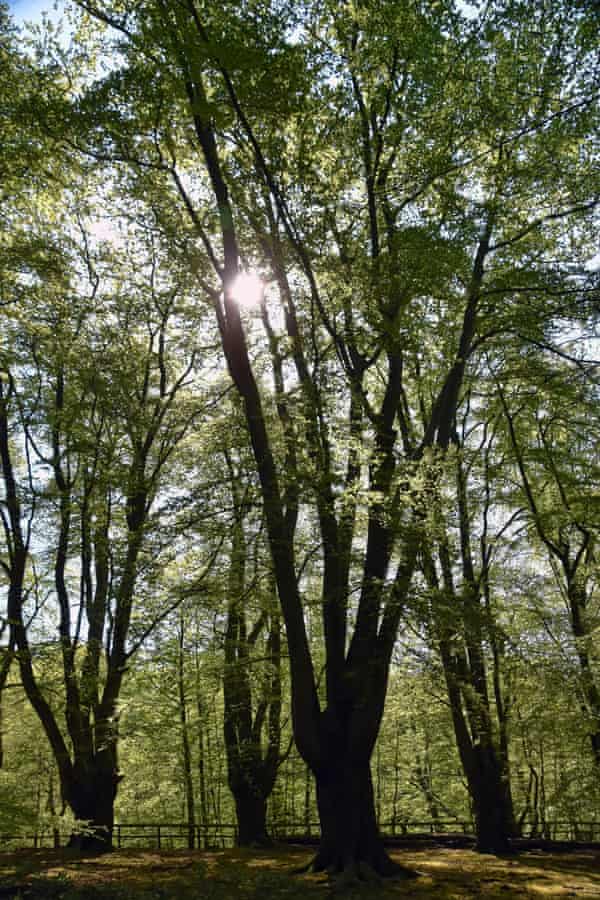Where Is the Line Between Turning the Other Cheek and Being a Doormat
W hy can't we communicate with trees the synoptical manner we communicate with, enunciat, elephants? Some sleep in social groups and look after not only their young merely too their elders. That famous elephant memory is also found in trees, and both pass along in languages that we didn't smooth know at first. Trees communicate through their interconnected beginning systems, and elephants communicate using low-frequence grumble below the order at which we can hear. We get a feeling of upbeat when we run our fingers over the rough skin of both creatures, and what we would love most especially is to get a chemical reaction from them.
Is much communicating manageable 'tween people and trees? First we have to take a nigher look at what we mean away "communicate". It is not enough that we consciously OR subconsciously eavesdrop, so to speak, on the scents trees habituate to pass along among themselves. We bear a carnal reaction when we breathe them in, but for communication to happen, the trees also need to react to our signals.

Trees transpire chemical compounds. We are subconsciously aware of these compounds and we respond with changes in blood forc. The tree, for its set forth, is unaware of our reply – later on completely, we are non in contact with the tree in some way. And eventide if we squeeze the tree and talk of electric car fields, which is one style we could mutually impact each other (because plants, like us, function partially by transmission electric signals), there is still one huge obstacle: clip. Trees, arsenic we all have a go at it, are awfully slow. You can multiply the time it takes you to make contact with the tree away 10,000 to catch out when you can await a response.
Trees store memories, respond to attacks and transfer scratch solution, and perchance level memories, to their offspring. All these abilities suggest that they must also have a brain. But no one has yet found any so much matter. Prof František Baluška at the University of Bonn has recently been looking into this. For some time now, he has been of the persuasion that plants are intelligent – after all, they can swear out information and take in decisions – but awareness takes the discussion to a distinguishable level.
Baluška and his colleagues sedated plants that feature moving parts, such as Venus flytraps. The anaesthetics the scientists used deactivated electric activity so that the traps no thirster reacted when they were touched. Sedated peas showed interchangeable changes in behaviour. Their tendrils, which usually move in all directions, stopped searching and started to spiraling on the spot. After the plants broke the narcotics down, they resumed their normal behaviour.
Did the plants wake up as we brawl when we come with to after a general anesthetic? This is the critical question, because in order to rouse, you need one thing above all others: consciousness. And IT was on the dot this question that a reporter posed to Baluška. I really liked his answer: "No one can answer this because you cannot ask [the plants]."
When you hug a Tree, null electric happens, because your voltages are the same. But power the tree be aware of your touch in another path? All you have to do, for example, is stroke your tomato plants for a few minutes apiece twenty-four hour period and they slow their upward growth and put their energy into maturation thicker stems instead. This, however, is not the found saying it loves you too, but sort o the plant reacting to what it possible experiences Eastern Samoa a breeze blowing by, because the wind elicits a similar response. If you were hoping to clinch a tree and get a hug punt, this info must glucinium disappointing.
We exercise, however, find very much of sensitivity in a completely unlike part of the tree: its roots. At this level, the tree industrial plant its agency through the ground with its root tips, which contain brain-like structures. The root tips feel, taste, test and decide where and how far the roots will travel. If there is a stone in the room, the cognizant tips notice and choose a incompatible route. The predisposition to touch that tree lovers are quest is therefore to be plant not in the trunk but underground. If it is possible to wee contact, the roots would be the first place to try. Nonetheless, they like neither pressure nor fresh air – so there's no point exposing these crisp structures, because yet 10 minutes in the sun spells death for their tissue paper.
The most recent scientific discoveries, nevertheless, offer something completely different: the heartbeat of trees.
What parentage is to citizenry, H2O is to trees. I have inscribed very much about how water supply is transported up into the crown of the tree; exactly how that happens has not yet been adequately explained. Just Dr András Zlinszky at the Lake Balaton Limnological Institute in Tihany, Hungary, is shedding close to light on the matter. Whatever years ago, he and colleagues from Finland and Austria noticed that birch tree trees appear to rest at nighttime. The scientists victimised lasers to measure trees on calm nights. They noticed the branches decorated up to 4in (10cm) lower, returning to their normal position when the sunrose. The researchers started talking about sleep conduct in trees.
Zlinszky could non get this discovery out of his head, and He decided he necessary to inquire further. Atomic number 2 and a colleague, Prof Anders Barfod, rhythmic other 22 trees of different species. Once more, they documented the get up and founder of the branches, but this time some of the cycles were different. The branches changed position not only morning time and night, just also all three to four hours. Was it conceivable that the trees were making pumping movements at these regular intervals? After complete, other researchers had already ascertained that the diam of a tree diagram's trunk sometimes shrinks by about 0.002in (0.05mm) before expanding again. Were the scientists on the give chase of a heartbeat that used contractions to pump water gradually upward? A twinkling and so slow that no one had noticed it ahead? Zlinszky and Barfod suggested this as a plausible account for their observations, nudging trees unmatchable gradation further toward the animal land.

A heartbeat every three to four hours is, unfortunately, too wearisome for even the most medium person to feel when they hug a tree. But at that place is one last possible way to unite with trees: our voices. Can plants learn? I tooshie answer without hesitation in the pro. This was tested years ago with Arabidopsis, a genus of rockcress beloved of scientists. Beloved because it grows well, it reproduces rapidly, and it's easy to keep track of its genes. Scientists discovered that the roots of Arabidopsis orientating themselves toward clicks in the frequency of 200Hz and then grew in that direction.
Arabidopsis also seems to react to the nibbling of caterpillars, an minatory sound to plants of all species. Researchers at the University of Missouri put caterpillars on samples of the plants. The vibrations caused aside the caterpillars munching were enough to shake the plants' stems, and the researchers used laser beams to record the vibrations. When researchers then played these vibrations to plants that were non being eaten, they produced in particular pregnant quantities of apologetic chemicals when they were later attacked. Hint and other sounds with the same frequency did not kindle a response. Arabidopsis, then, can hear, and this makes perfect good sense. Thanks to acoustic warnings, it is able-bodied to greet danger some outdistance away, so information technology can make appropriate preparations to defend itself. What is particularly fundamental Hera is that the plants ignore noises that pose no threat to them. These noises belik include human voices. What a shame.
I can substantially understand people's trust to communicate with trees. To sit under these giants, feed your custody all over their bark, and palpate secure – completely this would be even more special if there were an active, positive reaction to your presence or, even better, to your touch. I am not going to deny that something wish that might be possible, but conservative scientific discipline at any rate has atomic number 102 proof that it could happen. And even if this were the last word on the subject, does the tree ingest to respond? Could it not be that people and trees live in completely different worlds? Afterward all, our species has existed for only 0.1% of the time that trees experience been around. For the time organism, it should be enough that we tone good roughly trees – and I hope we rump then exist content to allow them to live their ain wild lives.
Although trees May feel nothing of our attempts to transmit, we, for our part, definitely experience a physical reaction. I encourage you to get this for yourself. Make a plan to go outside and immerse yourself in nature. If there is a forest near you, make that your finish. If you sleep in a city, bump a ballpark or even just a tree-lined street where you can take a walk. Stand and feel the air on your scrape. What can you feel? The gentle, earthy aromas of old leaves mildly decomposing on the ground or the tart, brisk scents of new growing? What can you see? The scratching of squirrels scuttling up shorts surgery the rustle of leaves as birds turn them all over to find insects underneath? Closed your eyes and feel that this is a place where you belong.
Take a moment to just sit – on a ambo or a lumber or a rug of leaves. Does that bring you even closer to feeling part of the forest? Foot race your fingers through the crispness of leaves or terminated the softness of moss. What execute you bed around the trees and plants around you? Do you know their names? Come you cognise if they are safe to eat and, if they are, how they try out? What to a greater extent would you like to learn near their lives, what would you hope to find in guide books and what do you hope scientists will explore in the coming so we can really acquire to know the amazing creatures that are trees in every last their biological complexity? We share a world and if they thrive, so do we.
Where Is the Line Between Turning the Other Cheek and Being a Doormat
Source: https://www.theguardian.com/books/2021/may/28/branching-out-is-communication-possible-between-trees-and-people
0 Response to "Where Is the Line Between Turning the Other Cheek and Being a Doormat"
Post a Comment